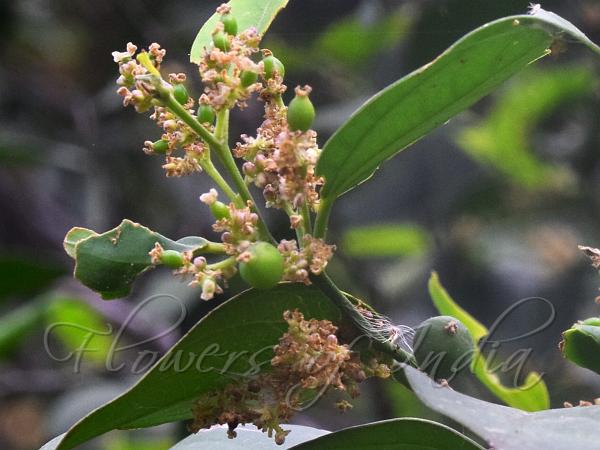|
| South-Asian Hackberry |
|

|

|
|
|
|
Photo: |
Botanical name: Celtis philippensis Family: Cannabaceae (Marijuana family)
Synonyms: Celtis laurifolia, Celtis philippensis var. wightii
Synonyms: Celtis laurifolia, Celtis philippensis var. wightii
South-Asian Hackberry is a tree up to 3-20 m tall, with
bark pale green or grey with black streaks inside, covered with warts,
blaze speckled with black and yellow; branchlets velvet-hairy. Young
leaves are pink. Leaves are simple, alternate; stipules lateral,
elliptic-ovate; leaf-stalk 4-15 mm, slender, velvet-hairy; blade 6-12 x
2-6 cm, ovate, elliptic or elliptic-oblong, base round or pointed, tip
tapering, margin entire, hairless, leathery; 3-nerved from the base,
prominent, intercostae scalariform, prominent. Flowers are tiny,
polygamous, yellow, in in leaf-axils finely velvet-hairy cymes, usually
on new shoots; male flowers usually at the basal part and female
flowers on the upper side; tepals 5, 2 x 1 mm, ovate, concave, fringed
with hairs, membranous; stamens 5, free, inserted round a woolly torus;
ovary superior, stalkless, ovoid, 1 mm, 1-celled; style 8 mm long,
velvet-hairy. Fruit is a drupe 7 x 5 mm, ovoid, smooth. South-Asian
Hackberry is found from Indo-Malesia to Australia and Tropical Africa.
Flowering: March-May.
| Identification credit: S. Kasim | Photographed in Kalakkad-Mundanthurai Tiger Reserve, Tirunelveli, Tamil Nadu. |
• Is this flower misidentified? If yes,